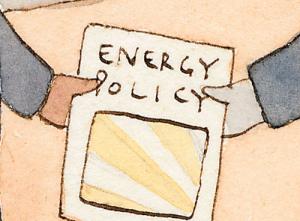What We Said After Election Day 2016

Here’s what we said in this column four years ago, less than a week after Election Day 2016. We got some things right and others not so:
Last week, Donald Trump was elected President.
Alright, you knew that.
By now, you’ve read the speculation about what this means for all the aspects of domestic and foreign affairs. Sure, the impact on trade, immigration and jobs might be important to some folks. But you care about what this means for utility regulation and policy.
First, it seems likely that natural gas production and pipeline development will maintain its pace if not increase. There will probably be less tolerance for the efforts of opponents. Though those efforts could become more confrontational.
So that means natural gas prices will remain fairly low. Since gas prices are the main driver of electric rates, electric bills will also remain fairly low by historical standards.
Second, low gas prices will continue to put pressure on the competitors to gas-fired power plants.
Existing nuclear and coal-fired plants in the competitive wholesale markets will continue to be financially-challenged. Would the new administration take steps to intervene or reform competitive markets to support nuclear and coal? Through legislation? Or administratively at FERC?
Notably, FERC has only three commissioners now. All three are Democrats.
To fill the two empty seats, the new President will nominate two additional commissioners for US Senate approval. And, the term of one present commissioner expires in seven and a half months, on June 30.
By summer, the new President can be expected to have three appointees at FERC, a majority. All three can be Republicans.
FERC watchers know the Chair has significant authority among the commissioners. And that the President designates the FERC Chair. The new President can be expected to move that authority from the present Chair in the first months of the administration.
Renewable development will be financially-challenged as well by low gas prices. Though utility-scale wind in some sections of the country has become particularly competitive.
Third, there is the Clean Power Plan. Or, should I say, there was the Clean Power Plan.
My extensive experience in how the Clean Air Act has controlled electric generation informs me. In my experience, an executive branch’s stance on pollutant reduction is as meaningful as law and regulation.
We can expect the new administration to be talking far less about aggressively reducing carbon dioxide emissions than the current administration. As a consequence, excepting continued emission reducing initiatives in the politically-blue states, the mood for such initiatives elsewhere could wane.
Fourth, interest rates will probably rise. This and other financial trends will put upward pressure on utilities’ cost of capital. Hello rate of return witnesses. It’s time to warm up your models.
Fifth, what about electric sales growth? Will the economy heat up (with a manufacturing surge), accelerating sales growth? Or will the economy come crashing down (with another housing downturn), taking electric sales with it?
On that, all bets are off.

